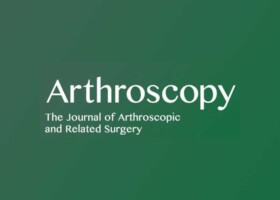
Authors:
Grant J Dornan, J Christoph Katthagen, Dimitri S Tahal, Maximilian Petri, Joshua A Greenspoon, Patrick J Denard, Stephen S Burkhart, Peter J Millett
Abstract:
The prevalence of full-thickness rotator cuff tears (RCTs) in the general population has been reported to be about 20%, with one-third of these RCTs being symptomatic. In the United States, more than 275,000 rotator cuff repairs (RCRs) of symptomatic RCTs are being performed every year, and the frequency is increasing. Approximately 25% of RCTs are massive rotator cuff tears (MRCTs) with involvement of 2 or more tendons or a tear dimension of >5 cm. The surgical treatment of MRCTs is challenging, with treatment options ranging from arthroscopic repair to reverse total shoulder arthroplasty (RTSA).
Pseudoparalysis (PP) represents a condition of the shoulder with active elevation of less than 90 in association with full passive elevation. Almost 20% of patients with MRCTs are affected by PP, and it has been shown previously that PP can be reversed effectively with arthroscopic RCR (ARCR). Although RTSA initially was introduced as a treatment option for cuff tear arthropathy, the indications for RTSA have expanded to include the treatment of MRCTs with PP and without osteoarthritis (OA). In fact, RCTs recently were identified as the second most common indication (21%) for RTSA implantations in the United States.
These 2 treatment options for PP without OA, ARCR, and RTSA have their own potential limitations. ARCR for MRCTs has been shown previously to be associated with fairly high rates of retear (especially with increasing initial tear size) and with associated deterioration of functional outcomes. RTSA, in contrast, can result in complications that include dislocation, scapular notching, and baseplate loosening in addition to infection. Moreover, limited information currently is available on long-term survivorship after RTSA, and many experts suggest that RTSA should be reserved for elderly patients.
Therefore, the best treatment for patients with PP without OA remains unclear. Although some surgeons prefer ARCR, others advocate RTSA for this condition. As the result of increasing medical costs, the cost- effectiveness of orthopaedic procedures increasingly is gaining importance in the current health care climate. The aim of this study was to determine the most cost-effective treatment strategy for patients with MRCTs and PP without OA. Specifically, we aimed to compare ARCR versus RTSA and investigated the effect of patient age on this decision. We hypothesized that ARCR would be more cost-effective than RTSA for the treatment of PP without OA.
For the complete study: Cost-Effectiveness of Arthroscopic Rotator Cuff Repair Versus Reverse Total Shoulder Arthroplasty for the Treatment of Massive Rotator Cuff Tears in Patients With Pseudoparalysis and Nonarthritic Shoulders
